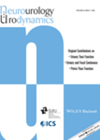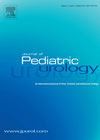
Journal Reviews archive for 2014
Reflux oesophagitis and risk of interstitial cystitis: is there a link?
This study aims to explore the potential link between reflux oesophagitis (RE) and interstitial cystitis / bladder pain syndrome (IC/BPS). IC/BPS is a chronic disease which is difficult to diagnose and treat. Two percent of the population may be affected....
Novel therapy for SUI
This is a joint study from Iran and University College London. Stress urinary incontinence (SUI) is a difficult condition to treat for patients and clinicians alike. Various surgical procedures have their benefits and pitfalls. Cell therapy is a new modality;...
Pacemakers in the upper urinary tract
This is an interesting study from Italy. The mechanism by which urine is transported from the kidney to the bladder via the upper urinary tract (UUT) remains poorly understood and elusive. For many years, pyeloureteric rhythmicity is thought to arise...
Adults with myelomeningocoele: life situation and bladder and bowel management
Long-term outcome studies of patients to include what happens at transition to adulthood are rare but increasing in the literature as paediatric urologists are questioning their long-term results more deeply. These authors aimed to assess life situation and bladder and...
Age does not impact risk for urethroplasty complications after TIP repair of hypospadias
This paper is evidence of an increasing trend (especially in the USA) to lower the age at which hypospadias repair is undertaken. The current generalised best accepted age to repair hypospadias is between 6-18 months, which was reduced in the...
Is renal pelvis reduction during dismembered pyeloplasty necessary?
The development of laparoscopic pyeloplasty has progressively led to a reduction in the amount of perioperative renal pelvic excision as a large excision leads to a longer anastomosis with associated increased risks (leak, operative time). This prospective study of 40...
Torsion of spermatic cord in children
This is an excellent review of ‘testicular’ torsion - which is said to occur in 1:4000 under 25-year-olds. Two age periods (adolescence and neonatal) are identified as having peak incidence. Acute torsion represents 27% of children with acute scrotum. The...
Lower pole vessels in children with PUJO: laparoscopic vascular hitch or dismembered pyeloplasty?
A crossing vessel accompanying pelvi-ureteric junction obstruction (PUJO) occurs in 25-50% of cases. The Hellstrom vascular hitch procedure was first described in 1951 and has regained popularity since 2003 in the era of laparoscopic surgery as it negates the need...
Needs of children with a chronic bladder in preparation for transfer to adult care
It is well recognised that transition from paediatric to adult practice is stressful for patients and parents. This paper describes a questionnaire-based study of 80 teenagers with chronic bladder disease (spina bifida exstrophy or other acquired neurogenic bladder condition) of...
Outcomes of preserving the foreskin during distal hypospadias
Hypospadias surgery continues to tax the minds of paediatric urologists. Increasingly distal hypospadias surgery is becoming more and more conservative (in some cases, carrying out only foreskin reconstruction and leaving a mild hypospadias) and the role of foreskin reconstruction as...
PUJO: Hellstrom principle revisited
This paper describes the result of four out of twenty-three cases (two males, two females) of pelvi-ureteric junction obstruction - PUJO - (mean age 18.25 years, range 16-20), mean follow-up two years (range six months – three years) that were...
Health-related quality of life in men with corrected hypospadias
More and more studies on long-term outcomes of paediatric operations are being published, many of which concentrate on health-related quality of life (HRQol) scores. This paper compared 45 men with corrected hypospadias (mean age 26.2 years +/- 5.1 years) with...





